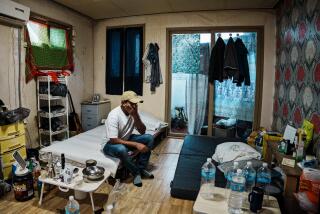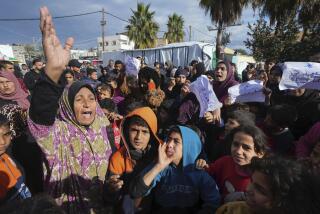His story won’t die
Daniel Pearl’s name you know. Chauncey Bailey’s, you probably don’t. Both men were murdered presumably because of what they did for a living.
Pearl was a reporter for the Wall Street Journal. He was slaughtered on video in Pakistan in 2002. Bailey was the editor of the Oakland Post. He was shotgunned to death on an Oakland street three weeks ago.
Radical Islamists bragged about killing “the spy/journalist” Pearl, the “Jew working against Islam.” A 19-year-old handyman, Oakland police say, has confessed to killing Bailey because the newsman was investigating the alleged financial shenanigans of the handyman’s bosses.
Daniel Pearl was a household name as soon as he went missing, Chauncey Bailey wasn’t. Then again, Pearl worked for a fabled newspaper; Bailey was the new editor of a small Bay Area weekly newspaper focused on the African American community. Pearl was covering an international war on terrorism; Bailey was looking into a local group’s money schemes. Pearl’s kidnapping was instantly linked to his work. In crime-ravaged Oakland, it took awhile to connect Bailey’s killing to his reporting.
Journalists around the world are murdered with dispiriting frequency, to silence them and to intimidate other reporters. According to the Committee to Protect Journalists, of the more than 600 journalists killed in the last 15 years, most were covering corruption, human rights, politics or crime -- not war. But until Bailey, no journalist in the U.S. had been killed because of his or her reporting since 1993. And of the dozen who were killed here in the line of duty since 1976, all but two reported for foreign-language news media or in immigrant enclaves. They were working in the U.S., but the practices of their home nations reached out and killed them in this one.
It appears that an “enclave” perception of Oakland’s chronic crime is part of what kept a lid on wider coverage of Bailey’s murder. What if he was just one more tragically dead black man in Oakland? His publisher told my colleague, John Glionna, a day after the killing that he wasn’t ready to link the murder with the reporting “until I am sure.”
Richard Prince writes an online journalism column and traces this to an attitude about Oakland that amounts to outsiders saying, “ ‘Well, we don’t want to even deal with it; it’s just them killing each other.’ So that contributed to the lack of interest.”
The alleged teenage hit man worked for Your Black Muslim Bakery, which isn’t Muslim in the Mideast sense, nor officially in the Nation of Islam sense. It began decades ago as a health food enterprise committed to black self-sufficiency and respect. Later, it went off the rails and fostered a renegade operation whose leaders were accused or suspected of rape, kidnapping, carjacking, assault and torture.
To all this, many in official Oakland evidently turned a blind eye. The bakery ran some social programs and was praised and supported by politicians long after some of those associated with it were regarded as a menace to Oakland society.
The East Bay Express -- a weekly publication that exposed some of the bakery’s doings five years ago -- detailed how local leaders treated the bakery, even endorsing a million-dollar healthcare program loan that apparently was squandered.
The Express’ editor and co-owner, Steve Buel, says the bakery’s original goals of “let’s empower the people without the help of the Man” went “a long way to lending credibility to other actions and other behaviors that are really completely reprehensible.”
So, according to Buel, official Oakland deferred and demurred and never held the bakery leaders to account. It was just “another constituency in the rainbow that you had to wave at and salute and treat with respect so you didn’t lose that sliver of the vote.”
The city operated like a lot of entities that claim they can handle their own internal problems but don’t. Think the Catholic Church protecting child-molesting priests, or Enron’s prosperous image hiding bankrupt practices. Or Martin Luther King Jr.-Drew Medical Center. The very elected officials, local and national, who should have been leading the charge for reform there were the ones who came late to the battle or stood in the way.
Killing a reporter is akin to killing a judge or a police officer. You’re not just murdering the person, you’re attacking the role: the robe, the badge, the notebook, the camera.
In 1976, after Arizona newspaper reporter Don Bolles was blown to bits in his car as he investigated corruption, a flotilla of journalists descended on the story with a vengeance and uncovered mob ties in the state.
Reporters groups are organizing the same thing for Oakland and the bakery. So although you didn’t hear a lot about Bailey’s murder, you may, in the end, hear a lot more about his story. In death, Bailey might expose more corruption and malfeasance than he ever could have as just one guy with a notebook.
--
More to Read
Start your day right
Sign up for Essential California for news, features and recommendations from the L.A. Times and beyond in your inbox six days a week.
You may occasionally receive promotional content from the Los Angeles Times.







